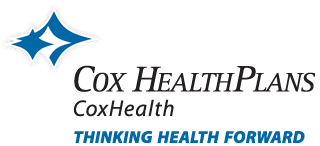Heat Stroke Signs & Symptoms
July 16, 2015, 9:41 pm
Sweating too much? Shortness of breath? Can’t eat enough ice cream? What exactly are the signs and symptoms of a heat stroke and how do you know? The following facts and figures will help you and your loved ones know what to do and when to get help.

Definition
Heat stroke is a condition caused by your body overheating, usually as a result of prolonged exposure to or physical exertion in high temperatures. This most serious form of heat injury, heat stroke can occur if your body temperature rises to 104 F (40 C) or higher.
Heat stroke requires emergency treatment. Untreated heat stroke can quickly damage your brain, heart, kidneys and muscles. The damage worsens the longer treatment is delayed, increasing your risk of serious complications or death.
Causes
- Exposure to a hot environment. In a type of heat stroke, called nonexertional or classic heat stroke, being in a hot environment leads to a rise in body temperature. This type of heat stroke typically occurs after exposure to hot, humid weather, especially for prolonged periods, such as two or three days. It occurs most often in older adults and in people with chronic illness.
- Strenuous activity. Exertional heat stroke is caused by an increase in body temperature brought on by intense physical activity in hot weather. Anyone exercising or working in hot weather can get exertional heat stroke, but it's most likely to occur if you're not used to high temperatures.
In either type of heat stroke, this condition can be brought on by:
- Wearing excess clothing that prevents sweat from evaporating easily and cooling your body
- Drinking alcohol, which can affect your body's ability to regulate your temperature
- Becoming dehydrated by not drinking enough water to replenish fluids lost through sweating
Symptoms
- High body temperature. A body temperature of 104 F (40 C) or higher is the main sign of heat stroke.
- Altered mental state or behavior. Confusion, agitation, slurred speech, irritability, delirium, seizures and coma can all result from heat stroke.
- Alteration in sweating. In heat stroke brought on by hot weather, your skin will feel hot and dry to the touch. However, in heat stroke brought on by strenuous exercise, your skin may feel moist.
- Nausea and vomiting. You may feel sick to your stomach or vomit.
- Flushed skin. Your skin may turn red as your body temperature increases.
- Rapid breathing. Your breathing may become rapid and shallow.
- Racing heart rate. Your pulse may significantly increase because heat stress places a tremendous burden on your heart to help cool your body.
- Headache. Your head may throb.
When to Seek Help
If you think a person may be experiencing heat stroke, seek immediate medical help. Call 911 or your local emergency services number.
Take immediate action to cool the overheated person while waiting for emergency treatment. This includes the following:
- Get the person into shade or indoors.
- Remove excess clothing.
- Cool the person with whatever means available — put in a cool tub of water or a cool shower, spray with a garden hose, sponge with cool water, fan while misting with cool water, or place ice packs or cold, wet towels on the person's head, neck, armpits and groin.
Heat Stroke Prevention
When the heat index is high, it's best to stay in an air-conditioned environment. If you must go outdoors, you can prevent heat stroke by taking these steps:
- Wear lightweight, light-colored, loose-fitting clothing, and a wide-brimmed hat.
- Use a sunscreen with a sun protection factor (SPF) of 30 or more.
- Drink extra fluids. To prevent dehydration, it's generally recommended to drink at least eight glasses of water, fruit juice, or vegetable juice per day. Because heat-related illness also can result from salt depletion, it may be advisable to substitute an electrolyte-rich sports drink for water during periods of extreme heat and humidity.
- Take additional precautions when exercising or working outdoors. The general recommendation is to drink 24 ounces of fluid two hours before exercise, and consider adding another 8 ounces of water or sports drink right before exercise. During exercise, you should consume another 8 ounces of water every 20 minutes, even if you don't feel thirsty.
- Reschedule or cancel outdoor activity. If possible, shift your time outdoors to the coolest times of the day, either early morning or after sunset.
The content is not intended to be substitute for professional medical advice, diagnosis, or treatment. Always seek the advice of your physician or other qualified health provider with any questions you may have regarding a medical condition. Never disregard professional medical advice or delay in seeking it because of something you have read on the Cox HealthPlans website.
Sources:
http://www.mayoclinic.org/diseases-conditions/heat-stroke/basics/definition/con-20032814
http://www.webmd.com/a-to-z-guides/heat-stroke-symptoms-and-treatment?page=3#2
